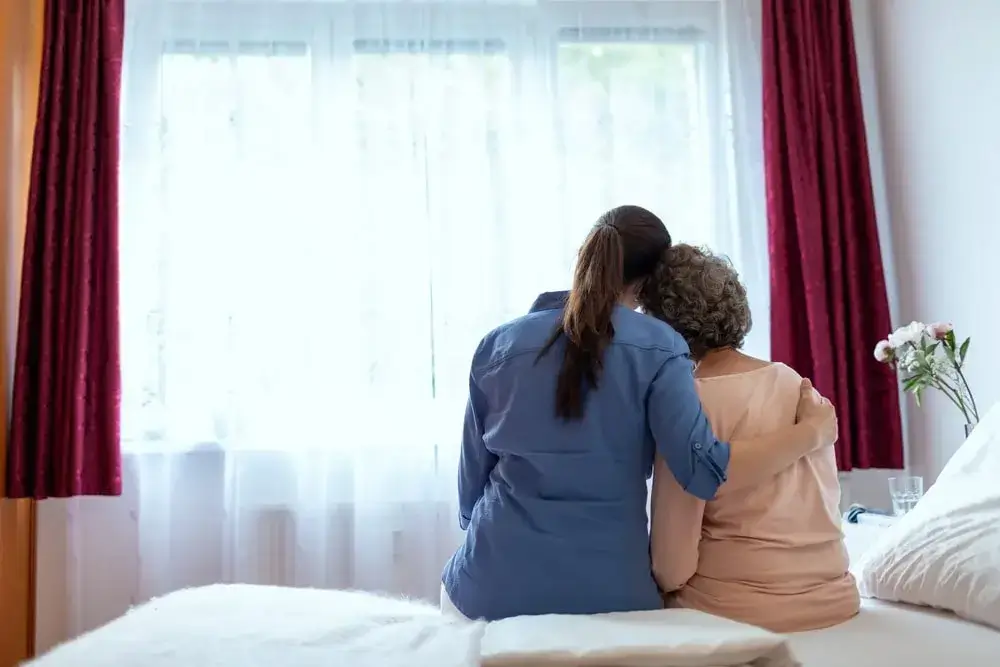Spending time with family and friends is important for everyone, and those on hospice care at home are no exception. But while Salt Lake City hospice patients can benefit greatly from seeing the people they love, visiting someone who is terminally ill can be a challenging experience.
When a close friend or family member is in poor health and has chosen to enter hospice care, you’ll want to provide them with support. A visit can give them comfort and joy as the end draws near, and being with your loved one at this time can give you peace of mind. Getting together is sure to be rewarding for both of you.
Having said that, it certainly isn’t easy to see someone you hold dear in hospice care. Many people in this situation put off visiting because they don’t know how to act. You won’t be in that group, however – armed with our tips on planning a visit, you’ll be able to bypass any awkwardness and make the most of your time left together.
 Choose the Right Time to Visit
Choose the Right Time to Visit
Timing is everything when it comes to visiting a hospice patient. Stopping by when your friend or family member is at their best – whether that’s in the morning, afternoon or the middle of the night – would be ideal. And, of course, visits should be planned around activities like bathing, dressing and personal grooming. If you’re not sure what time to arrive, speak with your loved one, their primary caregiver or the hospice agency staff.
Call Ahead on the Day of the Visit
The day you plan to visit a close friend or relative on hospice care at home, get in touch with their primary caregiver. A quick chat will give you an idea of how your loved one is feeling and whether they want company – if they’re experiencing extreme pain, nausea or any other distressing symptom, being around others might make the situation worse. By calling ahead, you can avoid bad visits and enjoy meaningful time together.
Follow Your Loved One’s Lead
When visiting someone in hospice care, listening is more important than speaking. Let your loved one guide the conversation, and if serious topics come up, keep an open mind. Hearing about their regrets or frustrations can be difficult, but refrain from changing the subject. Instead, respect the fact that they shared those thoughts, and ask gentle questions or offer encouragement to show how much you care.
Know that Your Presence Matters
The most valuable part of your visit might not involve conversation. Sometimes, people who are in hospice care feel too tired to chat. Or, like their visitors, they don’t really know what to say. Understand that simply being there, spending time with your loved one, is meaningful. You can offer comfort by sitting at their side and offering companionship – it’s your presence that counts, not your words.
Don’t Overstay Your Welcome
While at your loved one’s Salt Lake City home, keep an eye on the clock. Hospice patients tend to get tired rather quickly, so you may need to limit your visit to about 15 to 20 minutes. Be mindful of cues that your friend or family member might be giving you as well – turning away or closing their eyes could mean they’re ready to be alone, but if they’re actively engaged, the two of you might enjoy more time together.
Ask Before Bringing Tasty Treats
Don’t just arrive with a batch of your special chocolate chip cookies or your loved one’s favorite homemade soup. With hospice care at home, patients have few dietary restrictions, but there’s always the chance that your friend or relative is on a liquid diet or a once-loved food can no longer be eaten. Find out ahead of time, and you won’t run the risk of bringing the wrong treats when you visit a Salt Lake City hospice patient.
Consider an Appropriate Gift
A fragrant bouquet might seem like a good gift for someone on hospice care at home, but with any sort of respiratory condition, flowers could be problematic. As for a bunch of balloons, that might just crowd the space. Try to think of a meaningful present instead, such as a new pair of cozy socks or an incredibly soft blanket. Or, plan to bring something enjoyable, like new family photos, an audiobook or a jigsaw puzzle.
Don’t Take Anything Personally
Your loved one may seem completely uninterested in the snack or gift you decide to bring. Or, they might act as if they don’t want you there, not speaking at all or even asking their caregiver to end the visit. Whatever the case may be, don’t take offense. Fatigue could be the reason for their actions, or they may not be feeling well. In all likelihood, it isn’t personal, so taking it personally wouldn’t be logical.
Visiting a hospice patient can be a meaningful experience, but approaching the situation with respect, empathy and sensitivity is essential. For more tips on planning a visit with a loved one on hospice care at home, or to schedule a hospice consultation, contact Suncrest in Salt Lake City, Utah, today.

